
Roots
The vitality of our coils, the spring and sheen that captivate the eye, begins not with the visible strand, but deep beneath the surface, at the scalp. This often-overlooked terrain serves as the very foundation for hair growth, a complex ecosystem where hair care practices can either foster flourishing or contribute to disquiet. We begin our exploration by returning to these origins, seeking to comprehend the intimate dialogue between the practices we adopt and the well-being of the scalp that nurtures our unique hair. Understanding this fundamental connection empowers us to cultivate a more thoughtful, purposeful approach to our coiled strands, recognizing that true hair health radiates from a balanced, respected scalp.
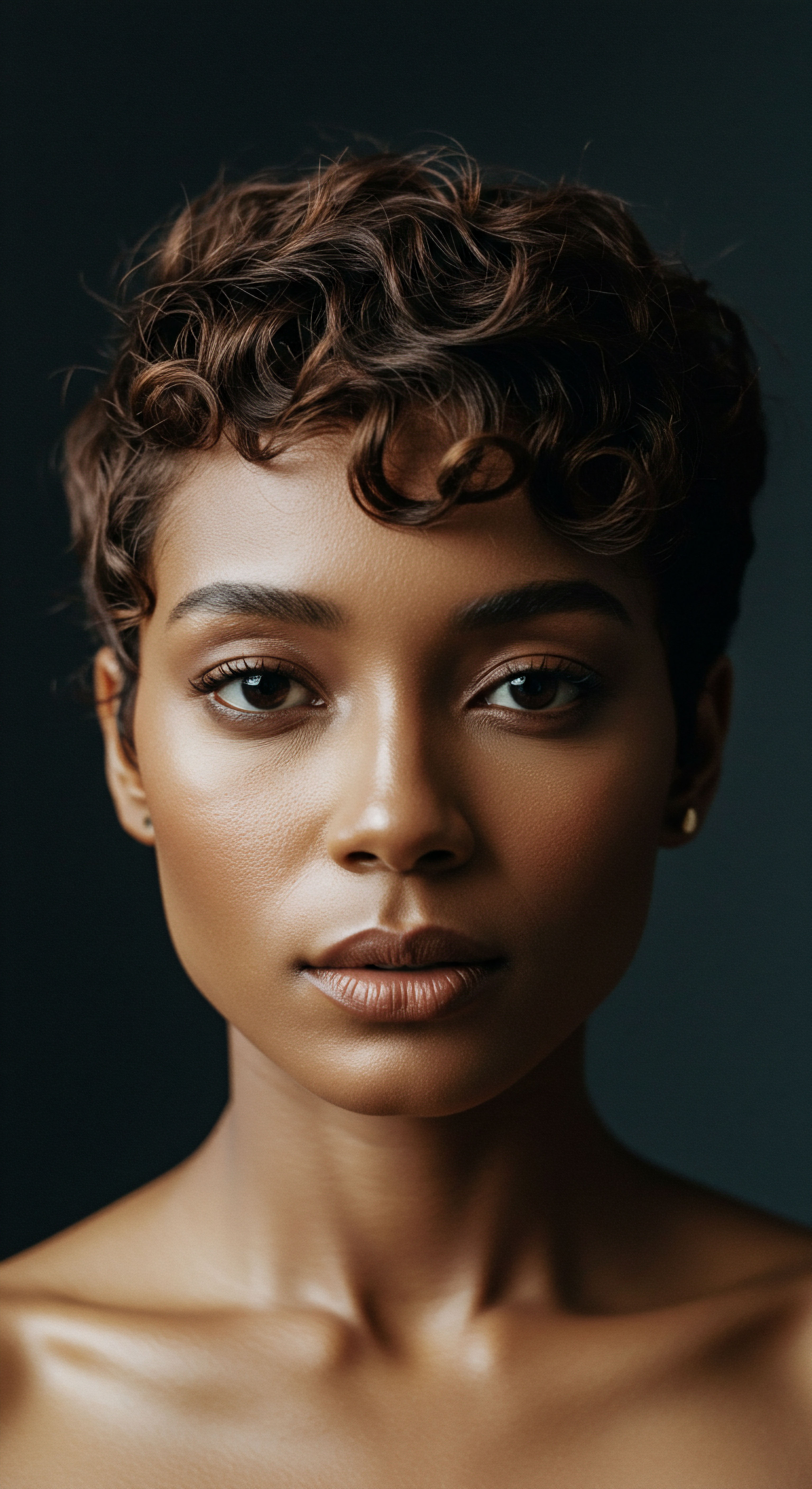
The Scalp’s Delicate Ecosystem
The scalp, though distinct from the skin covering the rest of our body in its density of hair follicles and sebaceous glands, shares many fundamental similarities. It acts as a crucial moisture barrier, designed to keep essential hydration locked in while repelling external aggressors. When this protective shield is compromised, a cascade of issues can arise, leading to dryness, itchiness, and flaking. The health of this barrier is profoundly influenced by the microbial life that calls the scalp home.
This microscopic community, composed of bacteria and fungi, exists in a delicate equilibrium. Disruptions to this balance, whether through environmental factors, genetic predispositions, or indeed, our hair care routines, can lead to chronic conditions.
The scalp, a living foundation for coiled hair, demands careful attention to its intricate microbial balance and protective barrier.
Consider the sebaceous glands, microscopic entities attached to each hair follicle, diligently producing sebum. This natural oil plays a dual role ❉ it hydrates the hair and skin, forming a protective film. However, an overproduction can lead to an oily scalp, characterized by greasiness and potential dandruff. Conversely, insufficient sebum can result in dryness.
The unique structure of coiled hair presents a particular challenge here. Sebum, by its very nature, struggles to travel down the spiraling length of a coiled strand. This inherent difficulty often leaves the ends of coiled hair prone to dryness, even when the scalp itself produces ample oil.

What Unique Challenges Does Coiled Hair Present for Scalp Health?
The very architecture of coiled hair, with its tight, often irregular twists and turns, inherently affects how natural oils distribute along the hair shaft. This structural characteristic means that sebum, while plentiful at the scalp, faces a more arduous journey to reach the ends of the hair. This phenomenon often leads to a scalp that can experience oiliness, sometimes accompanied by dry, brittle lengths.
Furthermore, the dense packing of coils can create a microclimate on the scalp, potentially influencing the resident microbial populations. While beneficial microorganisms are essential for maintaining scalp health, certain conditions, such as high humidity or product accumulation, can support the overgrowth of less desirable species, like Malassezia, a fungus often associated with dandruff.
- Sebum Distribution ❉ The spiral nature of coiled hair impedes the smooth travel of sebum from the scalp to the hair ends, leading to localized dryness on the hair shaft despite potential scalp oiliness.
- Microclimate Creation ❉ Tightly coiled hair can create a warmer, more humid environment close to the scalp, which might affect the balance of the scalp microbiome.
- Product Accumulation ❉ The density of coils can make it challenging to thoroughly rinse products, leading to buildup that can clog follicles and disrupt the scalp’s natural functions.

The Scalp Microbiome and Its Influence
The scalp is home to a diverse community of microorganisms, collectively known as the scalp microbiome. This living layer is critical for maintaining scalp health, playing a part in regulating inflammation, supporting the skin barrier, and balancing microbial populations. A balanced microbiome acts as a primary line of defense against harmful pathogens, shielding hair follicles and the scalp from infection and irritation.
Disruptions to this delicate balance can contribute to chronic scalp conditions. Factors such as genetics, skin type, environmental elements, and significantly, hair and scalp care routines, all shape the composition of this microbial ecosystem. Over-washing, for instance, can strip away natural oils and beneficial microbes, leading to an imbalanced environment. Conversely, infrequent washing may permit the overgrowth of harmful species.
| Factor Genetics and Skin Type |
| Influence on Microbiome Determine characteristics like sebum production and hair density, impacting microbial composition. |
| Factor Hair Care Routines |
| Influence on Microbiome Choice of products and washing frequency directly alter microbial populations. |
| Factor Environmental Factors |
| Influence on Microbiome Humidity and pollution can disrupt microbial diversity. |
| Factor Diet and Lifestyle |
| Influence on Microbiome Nutritional deficiencies or high sugar intake can upset the microbiome. |
| Factor Stress and Hormones |
| Influence on Microbiome Can influence sebum production and overall scalp health. |
| Factor A healthy scalp microbiome supports overall scalp and hair vitality. |

Ritual
Stepping from the fundamental understanding of the scalp, we now turn our attention to the daily and periodic practices that sculpt the reality of coiled hair health. Our routines, those cherished rituals we perform, hold immense power over the scalp’s well-being. It is within these moments of care that we can either inadvertently cause distress or thoughtfully provide the support necessary for our coils to truly thrive from the root. This section will delve into the specific techniques, product choices, and considerations that can significantly influence scalp vitality, offering guidance rooted in both tradition and modern understanding.

Cleansing and Its Profound Effect
The act of cleansing is foundational to scalp health, yet for those with coils, it carries a unique weight. The aim of cleansing is to remove excess sebum, product residue, and environmental impurities without stripping the scalp of its vital natural oils and beneficial microbes. The tight structure of coiled hair can sometimes make thorough rinsing a challenge, potentially leading to buildup that clogs follicles and fosters an environment for irritation.
Over-washing, a common concern across all hair types, presents a particular dilemma for coils. While frequent washing can remove beneficial oils, leading to dryness and irritation, insufficient washing can permit the accumulation of sebum and dead skin cells, which can contribute to issues like dandruff and even hinder hair growth. The key lies in finding a balanced washing frequency that respects the individual’s scalp needs and hair type. For many with coiled hair, washing every two to three days, or as needed, helps to manage sebum without undue stripping.
Thoughtful cleansing, balancing removal of impurities with preservation of natural oils, is a cornerstone of scalp vitality for coiled hair.

How Can Cleansing Frequency Affect Scalp Microbiome Balance?
The frequency of cleansing directly influences the delicate balance of the scalp microbiome. Infrequent washing can allow for an overgrowth of certain microorganisms, while excessive washing with harsh cleansers can strip the scalp’s natural oils and beneficial bacteria, disrupting its protective functions. The goal is to create a harmonious environment where the scalp can regulate itself effectively.
When selecting cleansers, the composition of the product holds considerable sway. Sulfates, commonly found in many traditional shampoos, can be overly aggressive, removing too much of the scalp’s natural oils and leading to dryness, itchiness, and flaking. Opting for Sulfate-Free Shampoos with a balanced pH (around 5.5) helps to cleanse gently while maintaining the scalp’s natural acidity, which is crucial for a healthy microbiome.
- Gentle Cleansers ❉ Prioritize sulfate-free, pH-balanced shampoos to cleanse without stripping essential oils or disrupting the microbiome.
- Rinsing Thoroughly ❉ Ensure all product is rinsed from the scalp to prevent buildup that can clog follicles and irritate the skin.
- Mindful Frequency ❉ Adjust washing frequency based on individual scalp oiliness, activity level, and product usage, aiming for a balance that avoids both excessive dryness and accumulation.
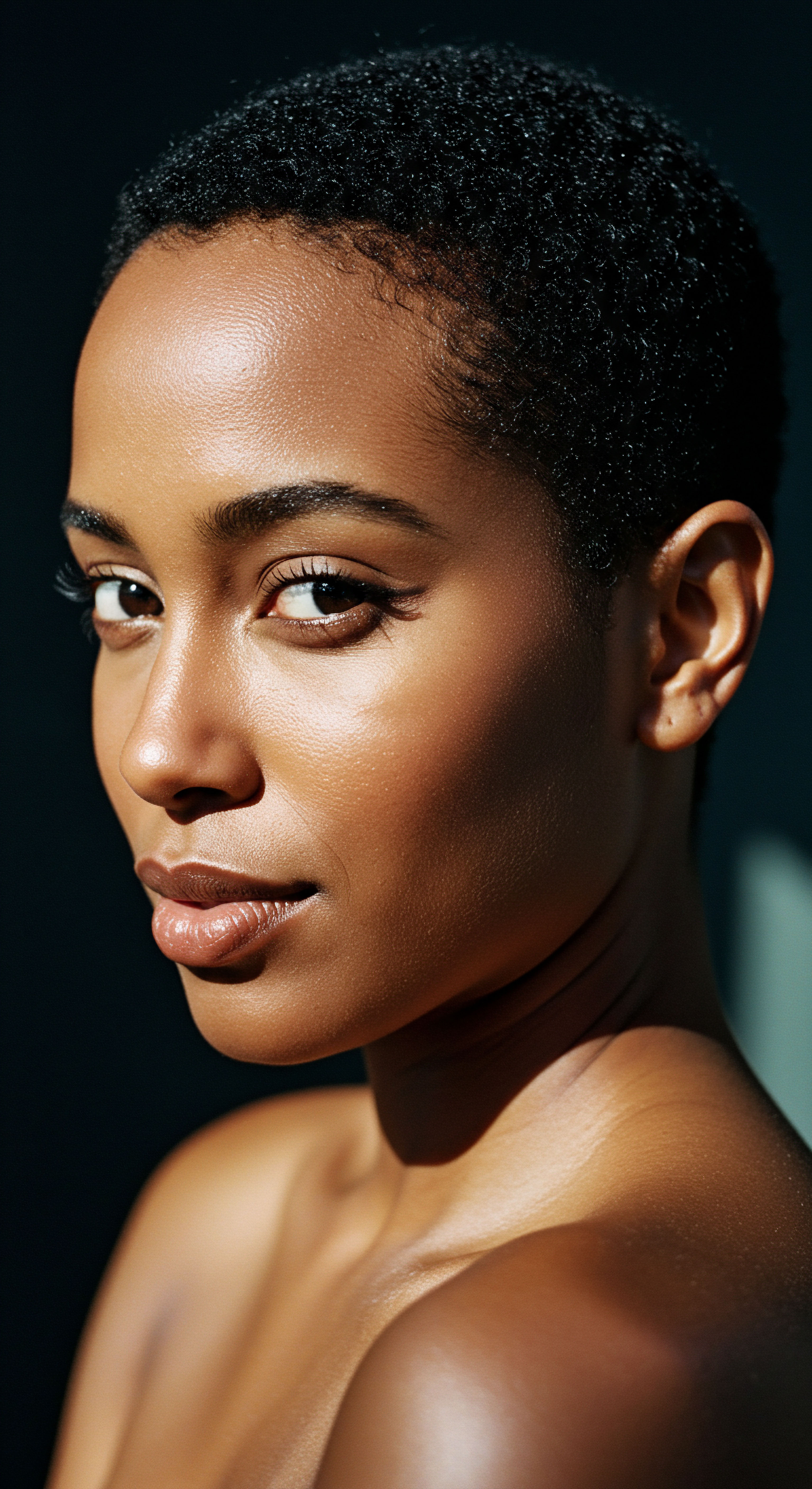
The Role of Conditioning and Moisturizing
Beyond cleansing, the application of conditioners and moisturizers plays a significant part in supporting scalp health, particularly for coiled hair. While conditioners are primarily applied to the hair lengths to aid in detangling and softening, some formulations can offer benefits to the scalp. However, thick moisturizers and the improper use of hair oils can sometimes plug hair follicles, potentially exacerbating conditions like folliculitis.
For coiled hair, which often experiences dryness due to the uneven distribution of sebum, moisturizing the scalp can be a vital step. Products containing humectants and emollients help to retain moisture and support the scalp barrier. Scalp massages, often performed with nourishing oils, can also aid in circulation and the absorption of beneficial ingredients, contributing to overall scalp vitality.
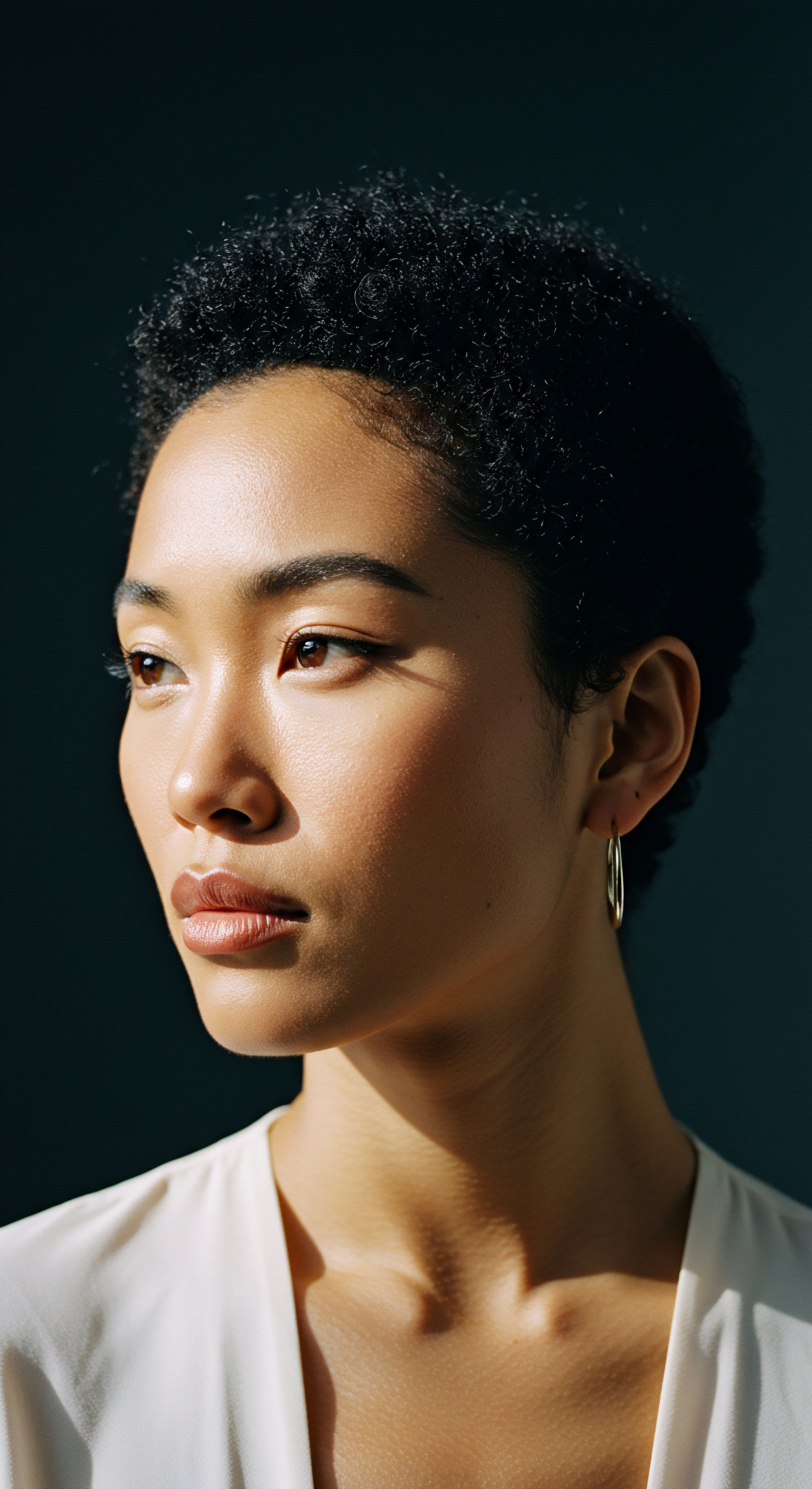
Protective Styling and Scalp Well-Being
Protective styles, a cornerstone of coiled hair care, offer benefits beyond simply minimizing manipulation and promoting length retention. When implemented thoughtfully, they can shield the scalp from environmental stressors and reduce daily wear and tear. However, improper execution of these styles can inadvertently create tension on the scalp, leading to conditions like traction alopecia. This occurs when consistent pulling on the hair follicles causes inflammation and damage, potentially resulting in permanent hair loss.
The choice of materials and the tightness of the style are paramount. Braids, twists, and weaves that are too tight can restrict blood flow to the scalp and cause irritation. Similarly, heavy extensions can put undue stress on the hair follicles.
It is crucial to prioritize comfort and avoid any sensation of pulling or pain during styling. Allowing the scalp to breathe between protective styles is also important, providing an opportunity for thorough cleansing and scalp treatments.
| Consideration Tightness of Style |
| Impact on Scalp Excessive tension can cause inflammation and lead to traction alopecia. |
| Consideration Weight of Extensions |
| Impact on Scalp Heavy additions place strain on hair follicles, potentially causing damage. |
| Consideration Material Choice |
| Impact on Scalp Some synthetic materials may cause irritation or allergic reactions on sensitive scalps. |
| Consideration Duration of Style |
| Impact on Scalp Leaving styles in too long can lead to product buildup and hinder proper cleansing. |
| Consideration Gentle styling practices protect the scalp from physical stress and irritation. |

Relay
Our understanding of coiled hair and its scalp requires a perspective that extends beyond the superficial, reaching into the profound interplay of biology, ancestral wisdom, and the contemporary landscape of care. The practices we adopt for our coils are not isolated acts; they are dialogues with our unique biological makeup, echoes of traditions passed through generations, and responses to the modern world. This section will delve into the more intricate layers of how coiled hair care truly influences scalp health, drawing upon scientific findings and cultural perspectives to illuminate a deeper, more interconnected understanding.
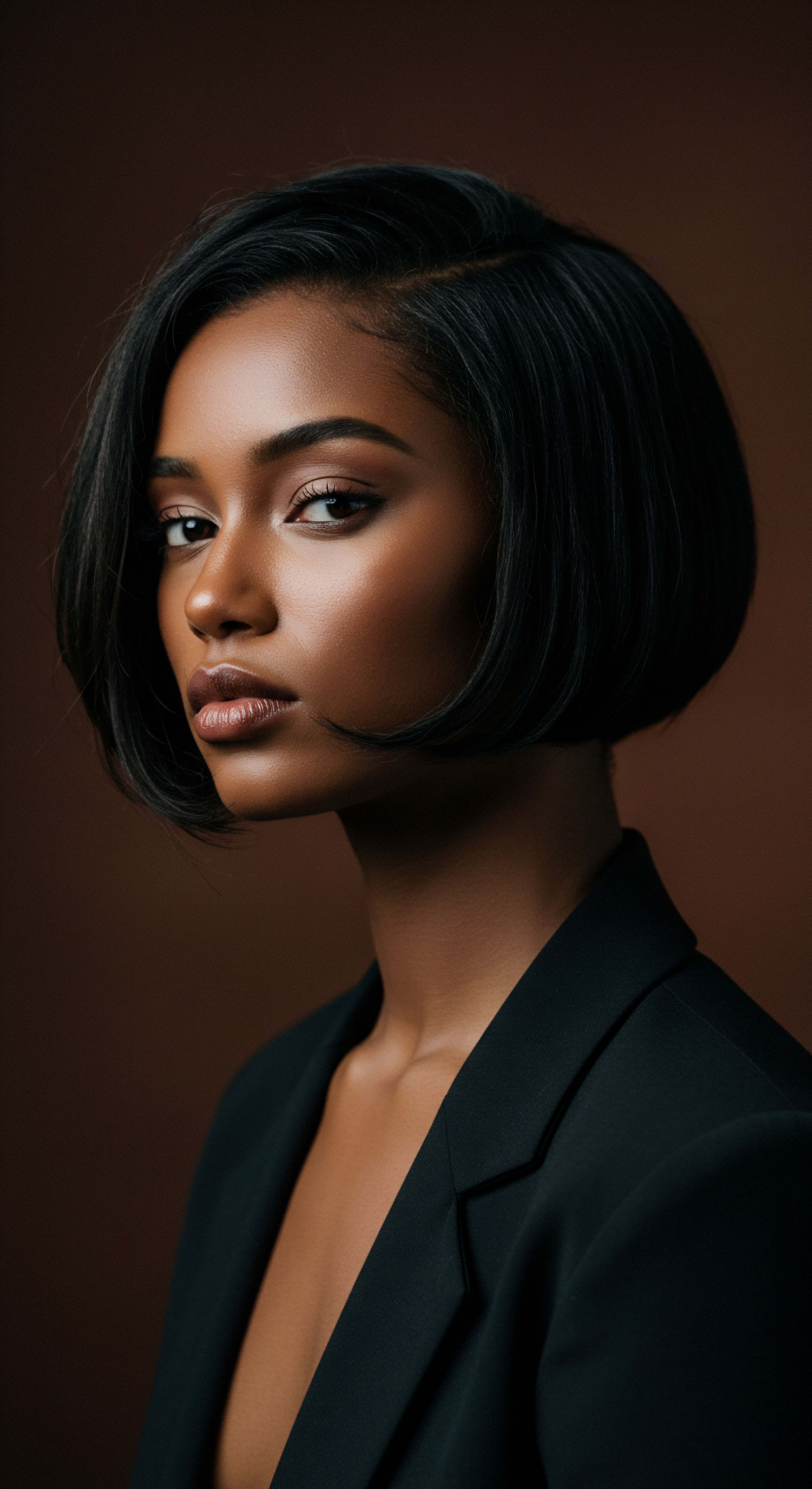
The Scalp Barrier and Its Integrity
The scalp skin, much like the skin on the rest of the body, serves as a vital barrier. This barrier restricts water loss, prevents the entry of external irritants, and regulates the immune response to various factors. A healthy scalp barrier is fundamental for promoting hair growth and retention. When this barrier is compromised, it can lead to dryness, itchiness, and dandruff, conditions that can significantly impact hair health.
Hair care practices, from the products chosen to the methods of application, directly affect the integrity of this barrier. Harsh cleansers can strip away essential lipids, weakening the barrier’s protective capabilities. Conversely, nourishing ingredients and gentle handling can help to fortify it. The presence of inflammation on the scalp, whether from conditions like seborrheic dermatitis or external irritants, can also impair barrier function, creating a cycle of distress for both scalp and hair.

How Does the Coiled Hair Structure Influence Sebum’s Journey and Scalp Barrier Function?
The unique helical shape of coiled hair presents a particular challenge for the even distribution of sebum, the scalp’s natural conditioning agent. Unlike straight hair, where sebum can easily glide down the shaft, the twists and turns of coils impede this flow. This often results in a situation where the scalp might exhibit oiliness due to sebum production, while the lengths of the hair remain dry and vulnerable.
This uneven distribution can indirectly impact the scalp barrier. When sebum is trapped at the scalp, it can contribute to buildup, potentially leading to follicular occlusion or providing a rich environment for certain microbial overgrowths.
Furthermore, the density of coiled hair can create a microenvironment on the scalp that differs from that of other hair types. This denser canopy can trap humidity and heat, which, while offering some protection from solar radiation, may also influence the balance of the scalp microbiome and potentially impact barrier function.
Coiled hair’s distinct structure dictates sebum’s path, profoundly influencing scalp barrier function and its inherent microenvironment.
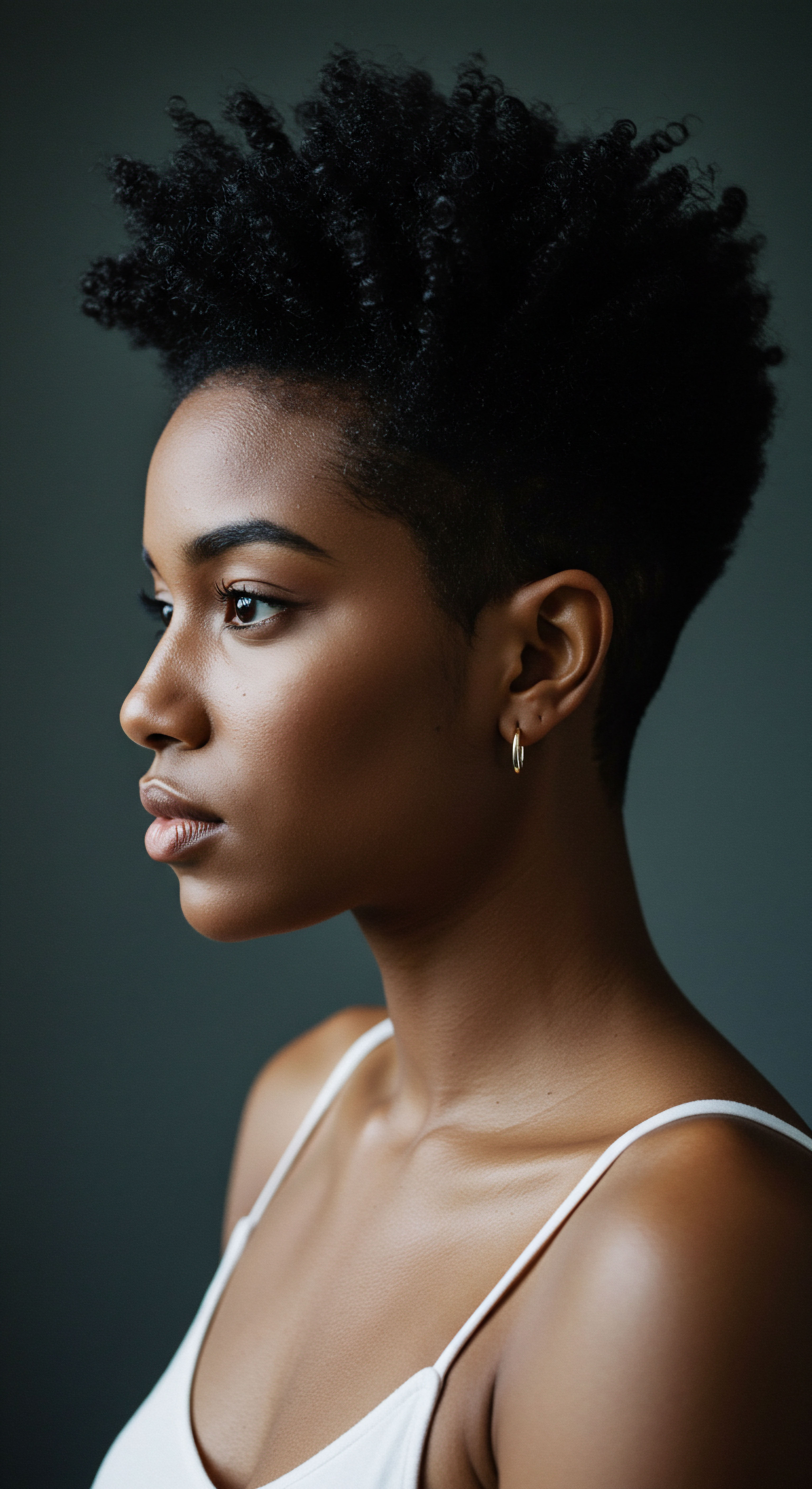
Microbial Balance and Inflammatory Responses
The intricate dance of microorganisms on the scalp plays a silent yet significant role in its overall health. A balanced scalp microbiome helps to regulate inflammation and provides a defense against harmful pathogens. When this balance is disrupted, certain conditions can arise, leading to discomfort and impacting hair vitality. For instance, seborrheic dermatitis, a common inflammatory scalp condition, is often linked to an overgrowth of Malassezia fungi.
Interestingly, some research indicates that certain scalp conditions, such as tinea capitis and seborrheic dermatitis, are found more commonly in individuals with skin of color and highly textured hair. This highlights the need for culturally sensitive and informed approaches to diagnosis and care. A study published in JAMA Dermatology in 2021 underscored the importance of physicians avoiding culturally insensitive language during hair loss examinations, particularly with patients who have tightly coiled hair, to ensure accurate diagnosis and patient comfort. This research points to a broader recognition of how social and cultural factors intersect with biological realities in hair and scalp health.

The Science of Product Formulation for Coils and Scalp
The efficacy of hair care practices for coils hinges significantly on the science behind product formulations. Products designed for coiled hair often prioritize moisture retention, given the natural dryness of these strands. However, the ingredients chosen and their interaction with the scalp are paramount.
Consider the impact of certain active ingredients on scalp health. Recent research has explored the benefits of natural extracts in addressing scalp concerns specific to textured hair. For example, a natural extract of Apium graveolens (celery) seeds, known as Apiscalp, has shown promising results. Studies indicate that this ingredient can reduce scalp itching by 80% and improve scalp hydration by 43% after three weeks of application in individuals with textured hair.
Furthermore, volunteers reported a significant improvement in scalp flaking, with an average reduction of 19% after just one application, increasing to 63% after three weeks, regardless of gender or hair type. This data highlights how targeted botanical extracts can support scalp barrier integrity and regulate epidermal differentiation, contributing to a healthier scalp environment for coiled hair.
The choice of oils and butters, while often seen as nourishing for coils, also warrants careful consideration for scalp health. While traditional practices across various cultures, including Ayurvedic and African traditions, have long utilized natural oils like coconut, sesame, and shea butter for scalp massages and hair conditioning, their application requires discernment. Over-application or infrequent cleansing after oiling can lead to product buildup, potentially clogging follicles and creating an environment conducive to microbial imbalances or folliculitis.
This deeper understanding allows us to approach hair care not merely as a routine, but as a sophisticated practice that honors the unique biology of coiled hair while drawing upon both ancient wisdom and modern scientific advancements to support optimal scalp health.
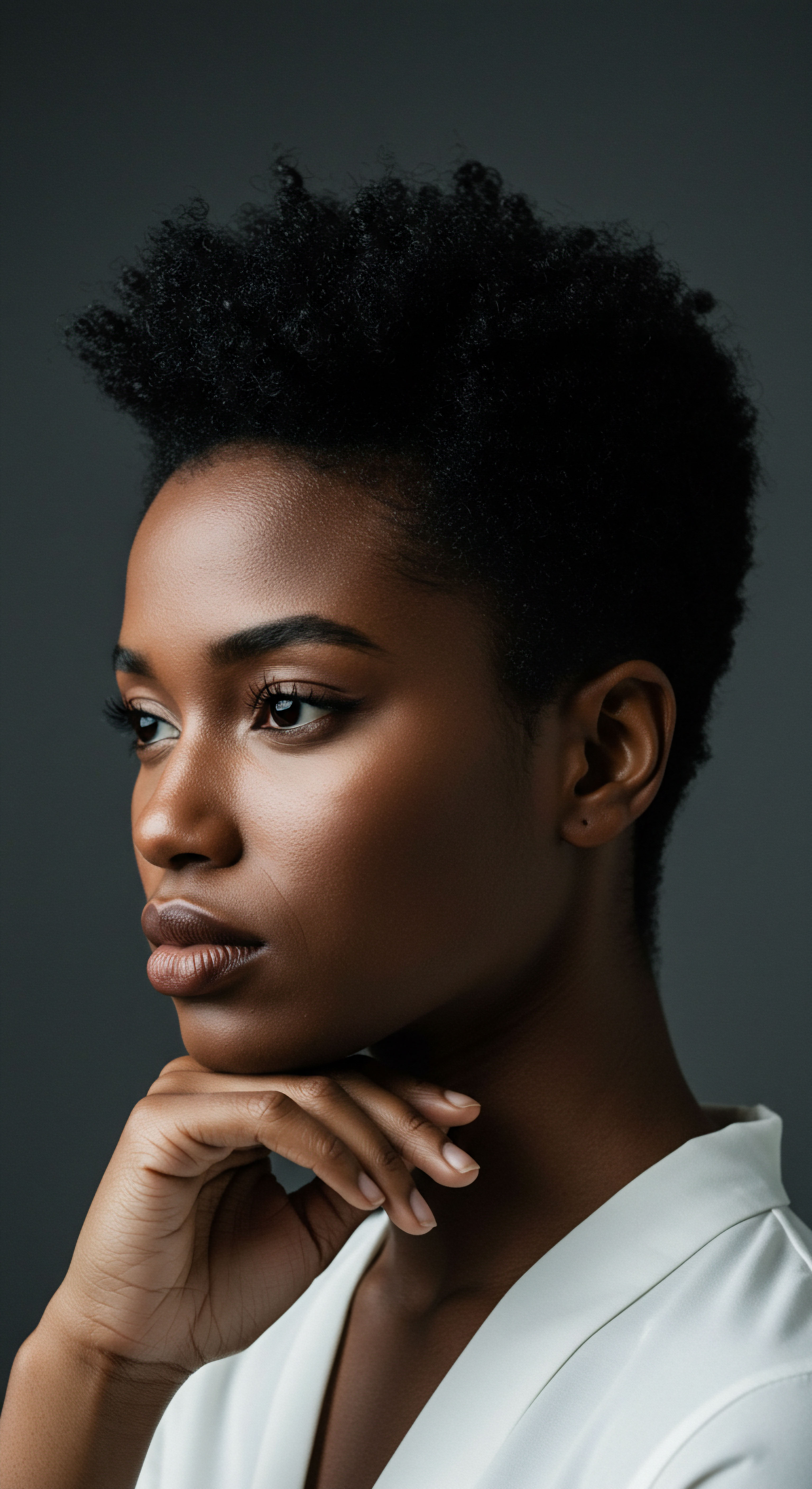
Reflection
As we conclude our exploration into the profound connection between hair care practices for coils and scalp health, a compelling truth surfaces ❉ the path to truly vibrant coils begins beneath the surface, within the living canvas of the scalp. Our journey has moved from the elemental understanding of the scalp’s delicate balance to the intricate dance of daily rituals and the deeper scientific and cultural currents that shape our approach to hair. The knowledge shared here is not a rigid set of rules, but rather an invitation to listen more intently to the quiet communications of our own scalp, to observe with greater awareness, and to choose practices that resonate with both ancestral wisdom and contemporary understanding.
The beauty of coiled hair, in all its varied forms, is a testament to resilience, a living heritage that deserves care rooted in both reverence and informed intention. May this understanding guide each hand as it tends to the precious coils, fostering not just outer luster, but a deep, abiding well-being from the very root.

References
- 1. Abdu, A. & Mohamed, S. (2021). A Study on Scalp Hair Health and Hair Care Practices among Malaysian Medical Students. International Journal of Medical Research & Health Sciences, 10(1), 1-6.
- 2. Gandolfi, M. & al. (2025). Scalp Microbiome Explained ❉ What’s Living on Your Scalp and Why It Matters. MONPURE.
- 3. James, P. (2023). A Guide to Scalp Microbiome. Penny James Trichology.
- 4. King, S. (2023). Waves, Curls, and Coils ❉ Understanding Curly Hair Types from a Trichologist. The Curl Ambassadors.
- 5. Rudnicka, L. Olszewska, M. & Rakowska, A. (2013). Atlas of Trichoscopy ❉ Dermoscopy in Hair and Scalp Disease. Springer.
- 6. Monpure. (2023). Why the Scalp Microbiome is the Key to Healthy Hair. MONPURE.
- 7. Curlsmith. (n.d.). 7 Trichologist Tips For A Healthy Scalp. Curlsmith.
- 8. Oserth. (2024). Embracing Cultural Practices for Healthier Hair. Oserth.
- 9. Clinikally. (2024). Scalp Biomes ❉ Personalized Haircare for Your Unique Flora. Clinikally.
- 10. Columbia Skin Clinic. (2023). Why Do I Have an Oily Scalp? Columbia Skin Clinic.
- 11. Alexis, A. F. & Heath, C. R. (2019). Scalp Infection, Inflammation, and Infestation. Dermatologic Clinics, 37(2), 173-182.
- 12. L’Oréal Paris. (n.d.). What is Sebum on the Scalp & Hair? L’Oréal Paris.
- 13. Natureallé. (2024). Exploring Ayurvedic Hair Care Practices For Relaxation And Optimal Scalp Health. Natureallé.
- 14. Orlando Pita Play. (2023). Haircare Rituals Around the World ❉ Exploring Global Traditions. Orlando Pita Play.
- 15. TrichoSynergy Hair and Scalp Clinic. (n.d.). Folliculitis Itchy Scalp Condition. TrichoSynergy Hair and Scalp Clinic.
- 16. Jing Botanics. (2024). Unlocking the Secrets to Vibrant Hair ❉ A Holistic Approach to Scalp Care with Jing Botanics. Jing Botanics.
- 17. Houzaide. (2024). The Rich Cultural History of Scalp Massages for Healthy Hair. Houzaide.
- 18. PURC Organics. (2023). Are Oily Scalp & Oily Hair Different. PURC Organics.
- 19. AllThingsBeauty. (n.d.). What Is Sebum? And How Does It Affect Your Scalp. AllThingsBeauty.
- 20. The Curl Ambassadors. (2023). Why Curly Hair is Unique ❉ Understanding Your Hair’s Structure. The Curl Ambassadors.
- 21. Society for Pediatric Dermatology. (n.d.). Curly/coily hair care. Society for Pediatric Dermatology.
- 22. Dove. (2023). The importance of scalp protection for naturally textured hair. Dove.
- 23. Butter & Sage. (2025). Scalp and Hair Oiling Across Cultures ❉ A Global Tradition. Butter & Sage.
- 24. AAVRANI. (2024). 10 Dos and Don’ts for Scalp Health. AAVRANI.
- 25. Croda Beauty Actives. (2024). New Research Shows Croda’s Apiscalp Delivers Scalp Care for Textured Hair. Croda Beauty Actives.
- 26. Tosti, A. & Duque-Estrada, F. (2014). Dermoscopy of Hair and Scalp. CRC Press.
- 27. Aveda. (n.d.). WHY SCALP HEALTH IS THE KEY TO HEALTHY-LOOKING HAIR. Living Aveda Blog.
- 28. DermNet. (n.d.). Defects of the hair shaft. DermNet.
- 29. Andriessen, A. & al. (2018). Insights on the Impact of Scalp Barrier Condition on Hair Health. Journal of Cosmetic Dermatology, 17(1), 105-111.
- 30. Happi. (2024). New Data on Apiscalp for Textured Hair. Happi.
- 31. Science Alert. (2023). Cool New Experiment Explains Why We Evolved Curly Hair. Science Alert.
- 32. Rakowska, A. & al. (2014). Hair Shafts in Trichoscopy ❉ Clues for Diagnosis of Hair and Scalp Diseases. ResearchGate.
- 33. Twelve Beauty. (2024). Sensitive Scalp Solutions ❉ How to Identify, Treat, and Manage Scalp Sensitivity Effectively. Twelve Beauty.
- 34. Twelve Beauty. (2024). The Secret to Healthy Hair? It All Starts with Scalp Care. Twelve Beauty.
- 35. Wasiluk, A. & al. (2022). Diagnostic Accuracy of Trichoscopy in Trichotillomania ❉ A Systematic Review. Acta Dermato-Venereologica, 102, adv00705.
- 36. I Love Riccio. (n.d.). How often should you wash curly hair to avoid losing shape and volume? I Love Riccio.
- 37. Lasisi, S. & al. (2023). Human scalp hair as a thermoregulatory adaptation. Proceedings of the National Academy of Sciences, 120(10), e2213621120.
- 38. Madame La Présidente. (2023). Sebum, what is it? Madame La Présidente.
- 39. Ducray. (n.d.). Dandruff and coily or curly hair. Ducray.
- 40. Curlsmith. (n.d.). The Ultimate Guide to Coily Hair. Curlsmith.
- 41. Dermatology Times. (2021). Trichoscopy Advances Hair and Scalp Disease Diagnoses. Dermatology Times.
- 42. Harklinikken EU. (n.d.). Hair Types 101. Harklinikken EU.
- 43. Heath, C. R. & al. (2021). Special considerations for examining hair loss with tightly coiled hair. JAMA Dermatology, 157(4), 481-482.
- 44. Callender, V. D. & al. (2024). Fundamentals of Ethnic Hair ❉ The Dermatologist’s Perspective. ResearchGate.
- 45. Everyday Health. (2023). What Type of Hair Keeps You Cooler, Curly or Straight? Everyday Health.
- 46. Hims. (n.d.). Scalp Inflammation Hair Loss ❉ Causes & Treatments. Good Health by Hims.
- 47. Schwarzkopf Professional. (n.d.). Understanding Different Hair & Scalp Types. Schwarzkopf Professional.
- 48. Medical News Today. (2020). Scalp folliculitis ❉ Symptoms, pictures, causes, shampoos and creams. Medical News Today.
- 49. Draelos, Z. D. (2010). The Genomic Variation in Textured Hair ❉ Implications in Developing a Holistic Hair Care Routine. MDPI, 2(2), 221-230.